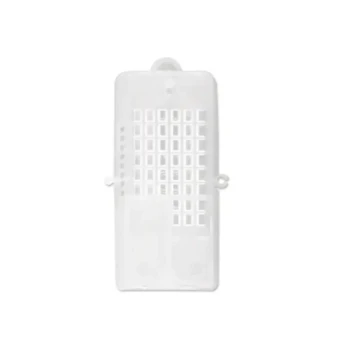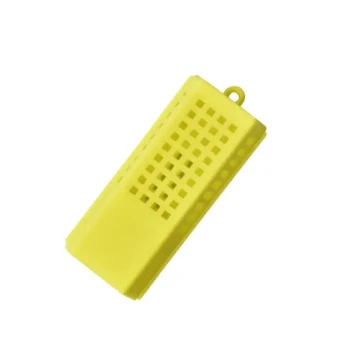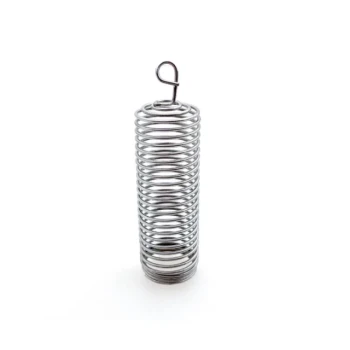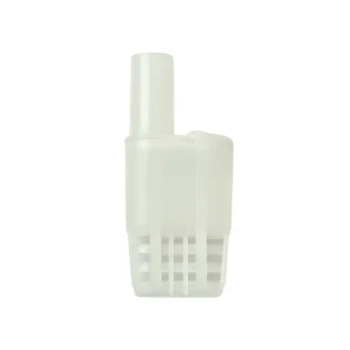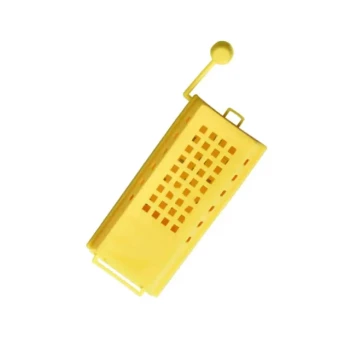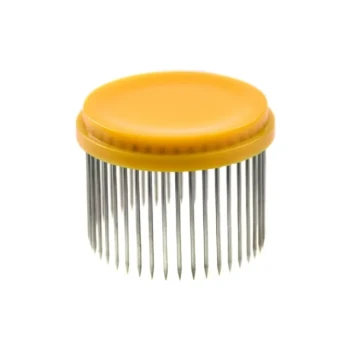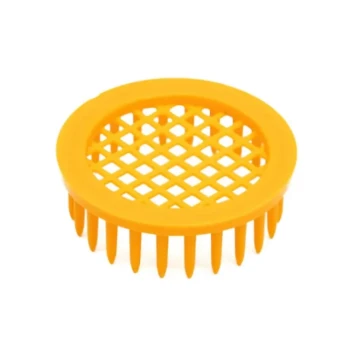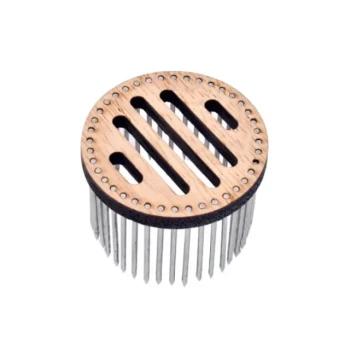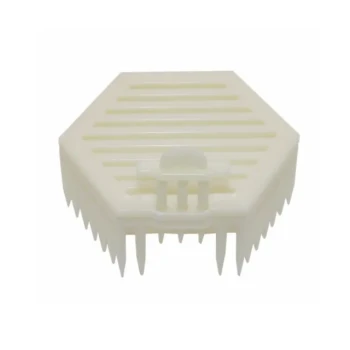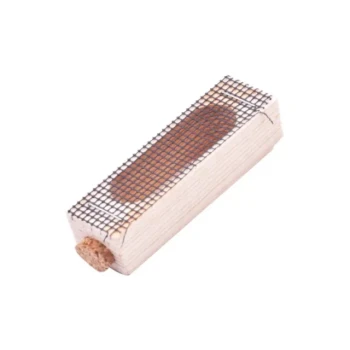At its core, a queen cage is an essential tool for one of the most critical and delicate operations in beekeeping: introducing a new queen to a colony. Its primary importance lies in protecting the queen from the colony's own worker bees, which will instinctively attack and kill any bee with an unfamiliar scent. The cage provides a safe, temporary enclosure that allows the hive to gradually acclimate to the new queen's unique pheromones before she is released.
A beehive operates like a single organism united by scent. A queen cage is the tool that manages this sensitive social dynamic, creating a controlled "get-to-know-you" period that prevents the colony from killing its new, essential leader upon arrival.
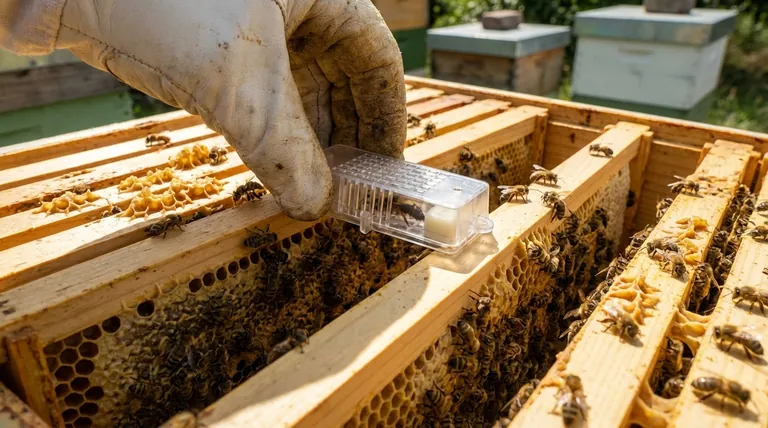
The Core Problem: Hive Scent and Queen Acceptance
To understand the importance of a queen cage, you must first understand the social structure of a honeybee colony. Everything is driven by chemical signals, or pheromones.
Why a Colony Rejects an Unfamiliar Queen
A colony's identity is defined by the unique pheromones of its queen. This scent is passed among all members of the hive, creating a cohesive "family scent."
Any bee, including a new queen, that lacks this specific scent is immediately perceived as a foreign invader and will be attacked. This defensive mechanism is vital for protecting the hive from robbing bees or predators.
The Role of Pheromones in Introduction
A queen cage allows the new queen's pheromones to slowly permeate the hive through the mesh of the cage. The worker bees can tend to her and interact with her through the screen without being able to sting her.
Over a period of several days, the colony becomes accustomed to her scent. As they accept her, they begin to see her as the new mother of the hive, ensuring a peaceful transition when she is finally released.
How a Queen Cage Functions
A queen cage is simple in design but brilliant in function. It addresses the challenge of introduction through several key features.
Providing a Physical Barrier
The most obvious function of the cage is to create a physical barrier. This protects the queen from being "balled" by the worker bees—an aggressive behavior where they surround and suffocate a foreign queen by vibrating their bodies to generate lethal heat.
Facilitating a Slow Introduction
The cage is typically placed between two frames in the center of the brood nest. This prime location ensures maximum exposure to the house bees, allowing her scent to spread efficiently throughout the colony.
The "Candy Plug" Automatic Release
Most queen cages have a small hole plugged with a hardened sugar candy. The bees on both sides of the cage begin to eat through this candy plug.
This process typically takes a few days, providing the exact amount of time needed for the queen's pheromones to be accepted. Once the plug is gone, the queen can walk out into a now-receptive hive. This method cleverly allows the bees to decide the precise moment of release.
A Critical Distinction: Cage vs. Excluder
It is vital not to confuse a queen cage with a queen excluder, as they serve entirely different purposes. This is a common point of confusion for new beekeepers.
Queen Cage: For Introduction
A queen cage is a small box used for the short-term transportation and introduction of a queen. Its purpose is temporary and is focused on social acceptance.
Queen Excluder: For Confinement
A queen excluder is a large, flat grid with openings that are big enough for worker bees but too small for the larger queen and drones to pass through.
It is used for long-term management to confine the queen to the lower "brood boxes" of the hive. This prevents her from laying eggs in the upper "honey supers," ensuring the honey harvested is free of developing bees (brood).
Common Applications and Trade-offs
The queen cage is a versatile tool used in several key beekeeping scenarios.
Installing a New Bee Package
When you buy a package of bees, it arrives with thousands of worker bees and one caged queen. The cage is essential for safely installing this new colony into a hive.
Requeening an Existing Hive
Beekeepers regularly replace queens to improve a colony's genetics, temperament, or productivity. The old queen must be removed, and the new queen is then introduced using a cage to ensure the hive accepts her.
The Risk of Premature Release
The primary risk is releasing the queen too early, before her scent has been fully accepted, which will result in her death. Always trust the candy plug method, as it allows the bees to dictate the timeline.
Making the Right Choice for Your Goal
Using a queen cage correctly is fundamental to the survival and success of your colonies.
- If you are installing a new bee package: Trust the queen cage and its candy plug to manage a safe and successful introduction.
- If you are requeening an aggressive or weak hive: Be sure to remove the old queen at least 24 hours before introducing the new, caged queen to eliminate competing pheromones and increase acceptance.
- If you need to find your queen during an inspection: You can use a "queen clip" or cage to safely isolate her while you work, preventing accidental injury and making your inspection less stressful.
Ultimately, mastering the use of the queen cage is not just about protecting a single bee; it's about ensuring the continuity and prosperity of the entire colony.
Summary Table:
| Function | Key Benefit |
|---|---|
| Physical Protection | Shields the queen from worker bee attacks during introduction. |
| Pheromone Acclimation | Allows the hive to gradually accept the new queen's scent over several days. |
| Automatic Release | The candy plug lets bees control the release timing for maximum acceptance. |
| Versatile Application | Essential for installing new bee packages and requeening existing hives. |
Ensure the success of your apiary with professional-grade equipment from HONESTBEE.
As a trusted wholesale supplier for commercial apiaries and beekeeping equipment distributors, we provide the durable, reliable queen cages and tools you need for smooth, successful hive management. Our products are designed to support your operations at scale.
Contact our team today to discuss your wholesale needs and discover how HONESTBEE can support your business's growth.
Visual Guide
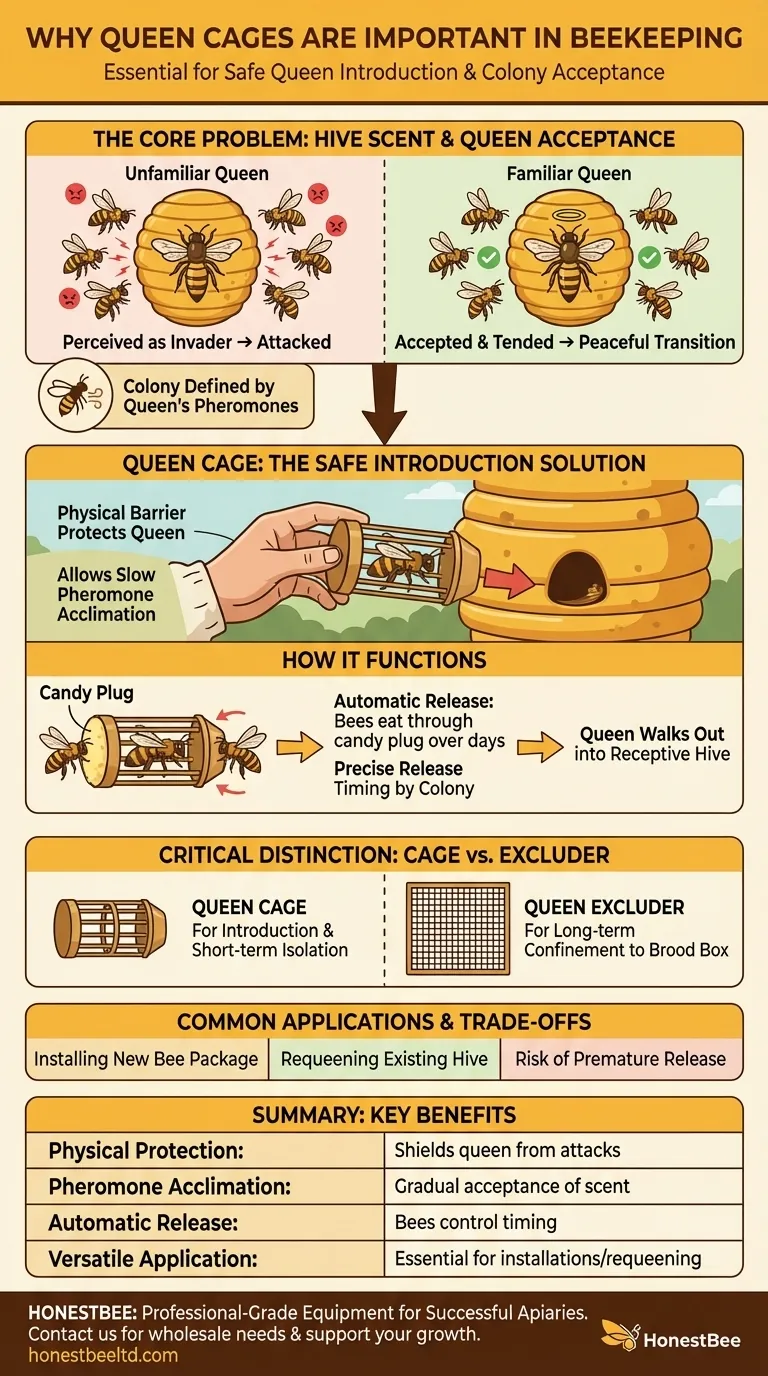
Related Products
- Professional Multi-Functional Queen Bee Cage
- Professional Multi-Compartment Queen Cage with Sliding Lid
- Durable Galvanized Steel Spring Queen Bee Cage
- Multi-Function Queen Roller Cage and Catcher
- Professional Queen Cage with Sliding Gate and Feeder Plug
People Also Ask
- What items are needed to place the queen bee's cage in the hive? A Guide to Successful Queen Introduction
- What are common mistakes to avoid when using queen cages? Ensure Successful Queen Introduction
- What are the components of a standard queen cage? A Guide to Safe Queen Introduction
- How should a queen cage be maintained over time? Ensure Queen Introduction Success
- What should be done if bees damage the queen cage or harm the queen? Rescue Your Queen and Save Your Hive
